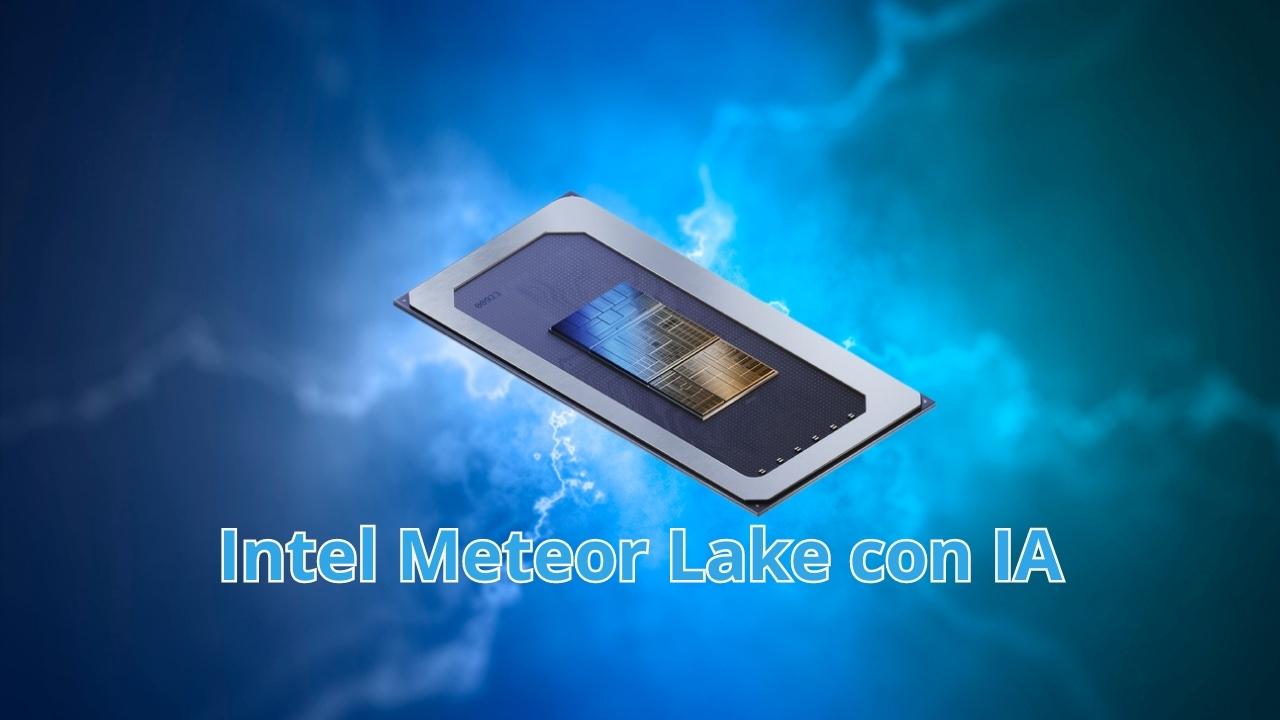Intel Meteor Lake holds a surprise, and that is that it will also have a hardware AI acceleration engine, as AMD also did for its Ryzen based on the Zen 4 microarchitecture. A big step forward that will improve performance with this type of workloads in next-generation x86 processors. But that’s not the only interesting thing, let’s break down all that this new series has to bring….
Intel Thread Director + Windows 11 Scheduler
As you may know, the scheduler of an operating system is a fundamental component of the kernel that is responsible for managing and coordinating the execution of processes. Its main purpose is to allocate system resources (such as CPU, memory and input/output devices) efficiently and equitably among running processes. The scheduler makes real-time decisions about which process or task should run next, taking into account various factors such as process priority, waiting time, amount of required and available resources, and configured scheduling policies. These decisions are made according to a specific scheduling algorithm.
In Windows 11 we have a scheduler that will be optimized to work as well as possible with the new Intel Meteor Lake, both in efficiency and performance, to correctly assign all processes to the cores as required.
In addition to this, we have another key element, and that is the new Intel Thread Director, a solution implemented hardware and software dome that will work in consonance with the Windows 11 scheduler to achieve the best result. This allows programmers to work with the two types of cores (P-Cores and E-Cores) in a completely transparent way.
New node and FOVEROS technology (chiplet)
Intel follows in AMD’s footsteps in its new Intel Meteor Lake microarchitecture and will be a chiplet, i.e. MCM packaging and will also have 3D packaging technology called FOVEROS. Again, following in the footsteps of its competitor, who already started using 3D packaging for its 3D V-Cache.
In addition, MTL, the successor to Raptor Lake, will come with a new Intel 4 manufacturing node, although they will also outsource some chips to TSMC. With the new 4nm they will improve chip efficiency and also bring a performance bonus, especially on the clock frequency side, which will be able to take a leap.
Reportedly, the new Intel node 4 would bring an increase in clock frequency of up to 21.5% higher than the previous node, and a reduction of up to 40% in terms of consumption, which is a big difference. This means that we could see processors at 6 Ghz soon, without the need for overclocking.
New socket
On the other hand, on the physical side, it is also important to note that Intel Meteor Lake arrives with a new socket, it is the LGA 1851, which will replace the current LGA 1700. This new socket has more pins, and will also be compatible with the next generation, the one that succeeds Meteor Lake, as usual.
New socket, new platform… that also implies that new chipset series will arrive with some improvements for these new chips.
Intel Meteor Lake Microarchitecture Technical Specifications
It seems that Intel Meteor Lake will come with new features in its microarchitecture to make a leap in IPC and achieve performance improvements. Among other things, because from the American company they have become serious to try to subtract the great impact that has had the improvement in the AMD Ryzen and because they have another tough competitor, such as Apple.
Intel Meteor Lake will have new high-performance cores, or P-Cores, with Redwood Cove architecture, while the efficient cores, or E-Cores, will be Crestmont. However, it is expected to improve by around 15% on average in IPC in workloads, which is a significant jump in these new Intel Core 14th Gen.
However, not much more is known yet, other factors remain a mystery until more information is forthcoming from Intel.
You may also be interested in the best processors on the market.
Tile CPU+GPU+VPU: Acceleration Engine for AI
As I mentioned before, this new generation will come with a chiplet format and will integrate what Intel calls “tiles”, which are nothing more than chips that will be placed in the same packaging as MCMs. In addition, among these tiles, not only a new generation of iGPU (2nd Gen Intel Arc Battlemage) and the CPU, with the IO unit, will be integrated, but a new processing unit will arrive with this generation.
Intel Meteor Lake will be an SoC that will also include a VPU, i.e. an artificial intelligence workload acceleration engine implemented by hardware and separate from the CPU or GPU. Therefore, neither of these two units will have to process such workloads when running AI apps, but it will be this dedicated unit that will take on the job.
According to Intel, this will mean that the AI work will be multiplied by up to 10 compared to the previous generation. In this way, it aims to catch up with AMD Ryzan AI and also with the NPU or Neural Engine of Apple Silicon SoCs.
The VPU will come in all Intel Meteor Lake SKUs, not just some. Thus, the GPU will be dedicated to high-parallelism tasks, such as multimedia and rendering, while the CPU will be dedicated to generic and fast-response loads, while the VPU will be dedicated to AI loads exclusively.
On the other hand, it is important to note that Intel will bring this AI engine to both desktop chips and those used in data centers, thus equalizing the offer in this aspect. This is an interesting step considering that currently there are few apps that use AI, such as some webcam programs, streaming programs, creator tools, etc., but there will be more and more of them, representing a higher percentage of software, and in the future they will be everywhere. In short, accelerating these types of loads is vital.
